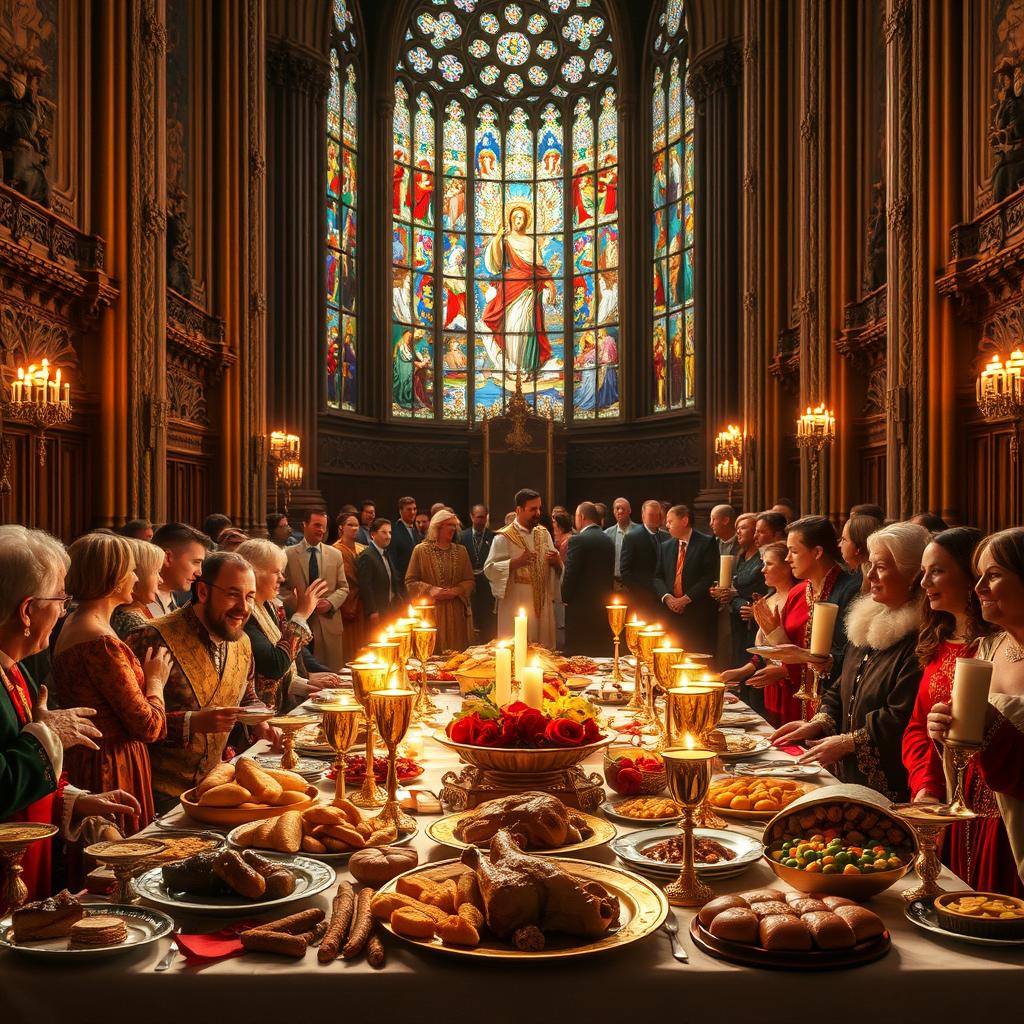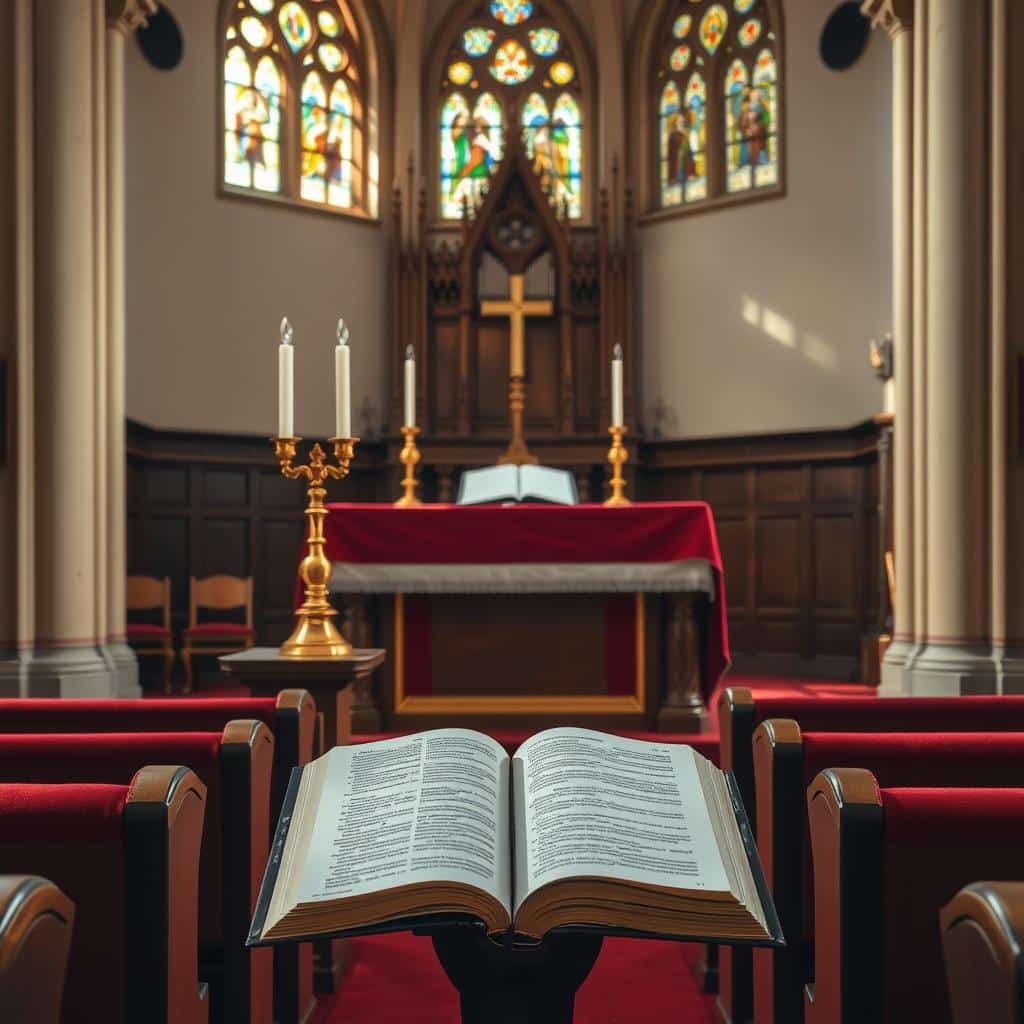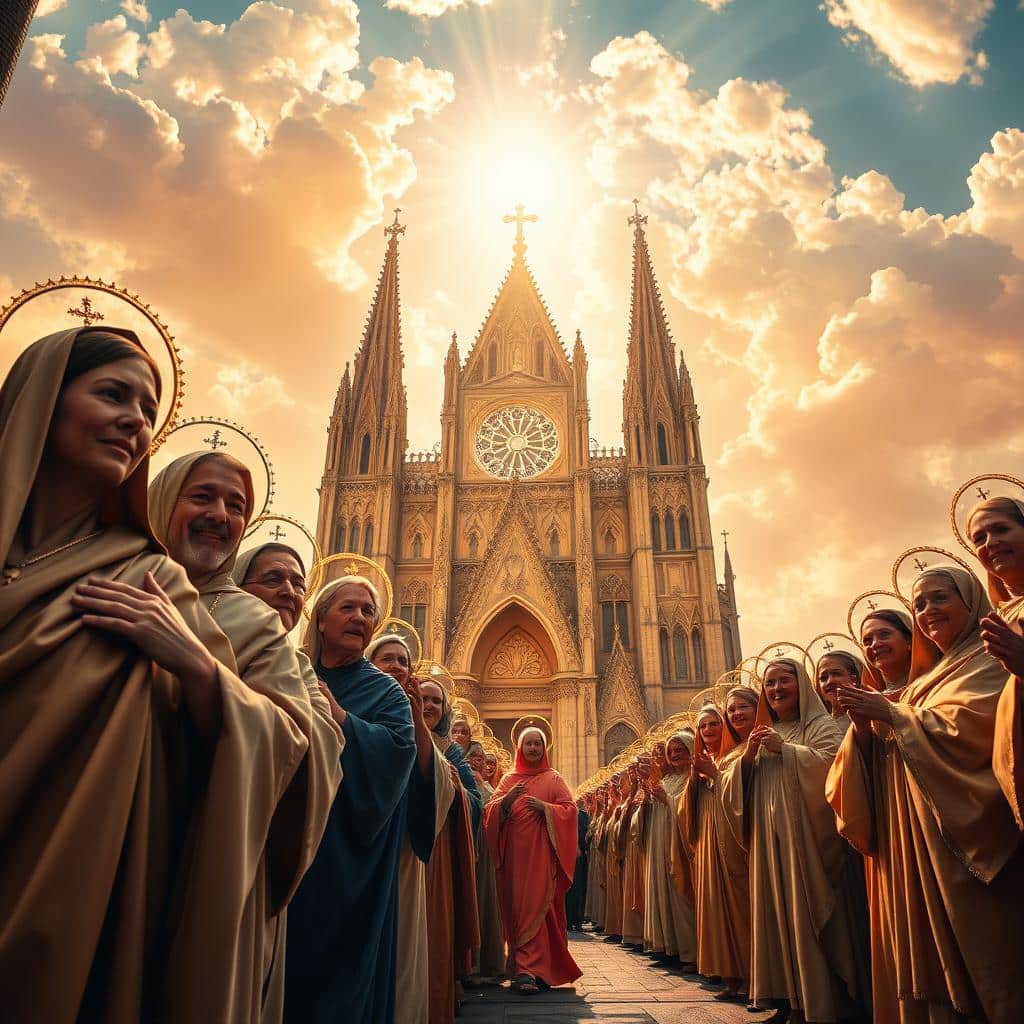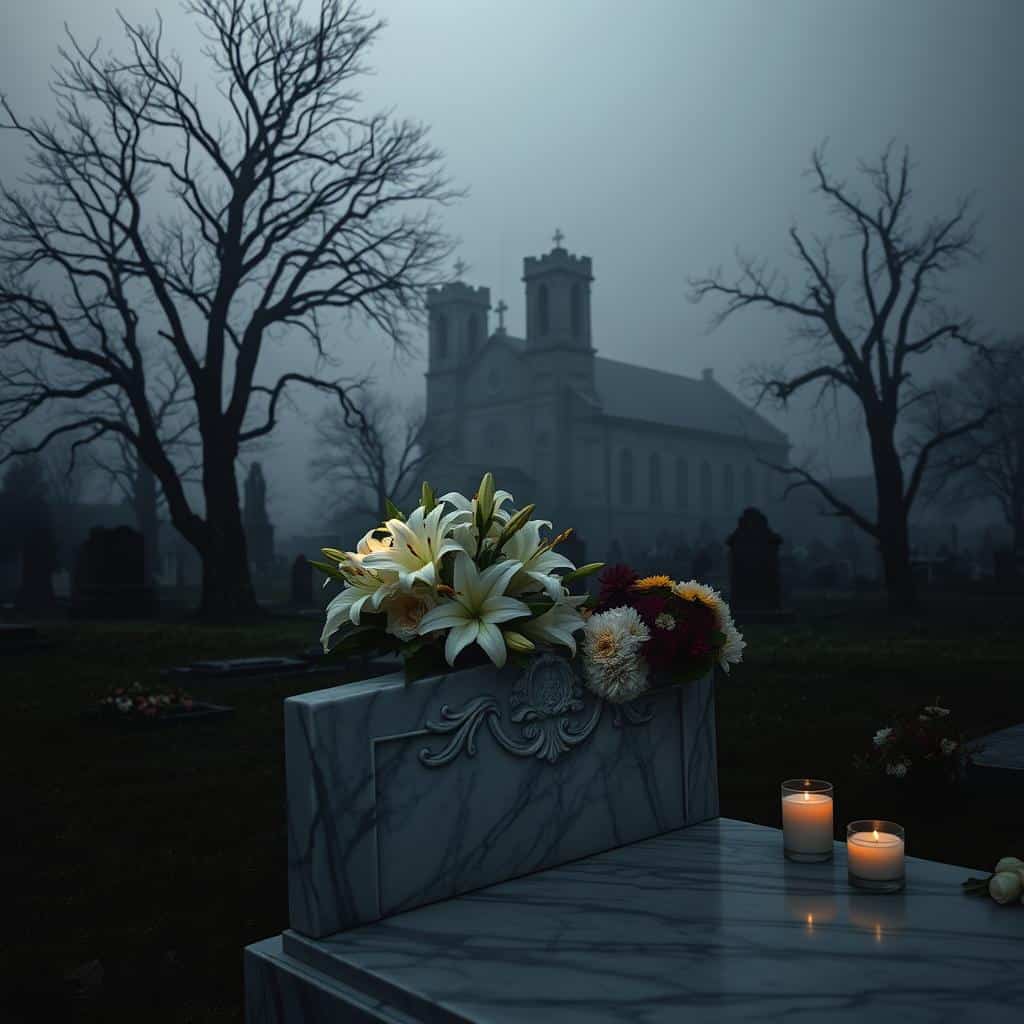This solemn feast honors true royalty over the world and marks the close of the liturgical year today with worship and mission in view.
Across Catholic, Anglican, Lutheran, Methodist, Moravian, Nazarene, Reformed, and Western Rite Orthodox communities, readings such as 2 Samuel 5:1–3, Psalm 122, Colossians 1:12–20, and Luke 23:35–43 shape a unified theology of shepherd, king, and redeemer.
Instituted in 1925 and revised after Vatican II, this observance frames parish life and family practice. It also connects to diocesan World Youth Day and the Revised Common Lectionary.
In this guide you will find clear history, lectionary placement, practical ways for communities to mark the day, and how the kingdom orientation of the liturgical year culminates here.
Key Takeaways
- Purpose: Honor christ king and close the liturgical year with worship and mission.
- Featured readings unite themes of rule, rescue, and hope.
- Observed widely across Christian traditions in the United States.
- Practical ideas help parishes and families mark this feast today.
- This solemn conclusion points forward to Advent and ongoing public witness.
Overview: Meaning and significance at the end of the liturgical year
At the close of the liturgical year this feast names divine rule as an answer to secular upheaval and wartime dislocation.
Purpose: It proclaims the kingdom of God at the end of Ordinary Time, focusing today on reign over history and the world.
The appointed readings trace a clear arc. Reading 1, 2 Samuel 5:1–3, begins with anointing. The responsorial Psalm, Psalm 122:1–2, 3–4, 4–5, lifts the community in pilgrimage. Reading 2, Colossians 1:12–20, declares cosmic rule. The Gospel, Luke 23:35–43, reveals kingship on the cross. These texts illumine leadership, suffering, and hope.
Placed on the final Sunday, the feast gives an eschatological lens: believers assess life under divine lordship and await return. Pastorally, it asks congregations to align worship, habits, and priorities with mercy and service.
Practical effect: This observance challenges secular narratives and calls the Church to witness through worship, charity, and public life. It serves as both culmination and bridge, closing a cycle and preparing hearts for Advent expectation.
Origins and historical development from Quas primas to today
Responding to a fractured postwar world, pope pius launched a feast in 1925 that made a bold theological claim. Through the encyclical quas primas he set a public witness to kingship as an answer to secularism and rising nationalism after World War I.
Originally placed on the final Sunday of October, the feast served as a clear confession of christ king amid turbulent civic life. In 1969 Pope Paul VI revised calendar practice and moved the observance to the last Sunday of the liturgical year. This shift in form emphasizes fulfillment, judgment, and hope.
Key reforms and meaning:
- Quas primas named Christ as ruler over creation, Church, and history.
- Paul VI’s reform broadened emphasis to cosmic reign with the title christ king “of the Universe.”
- Rank: highest solemnity; vestments: white, signaling victory and glory.
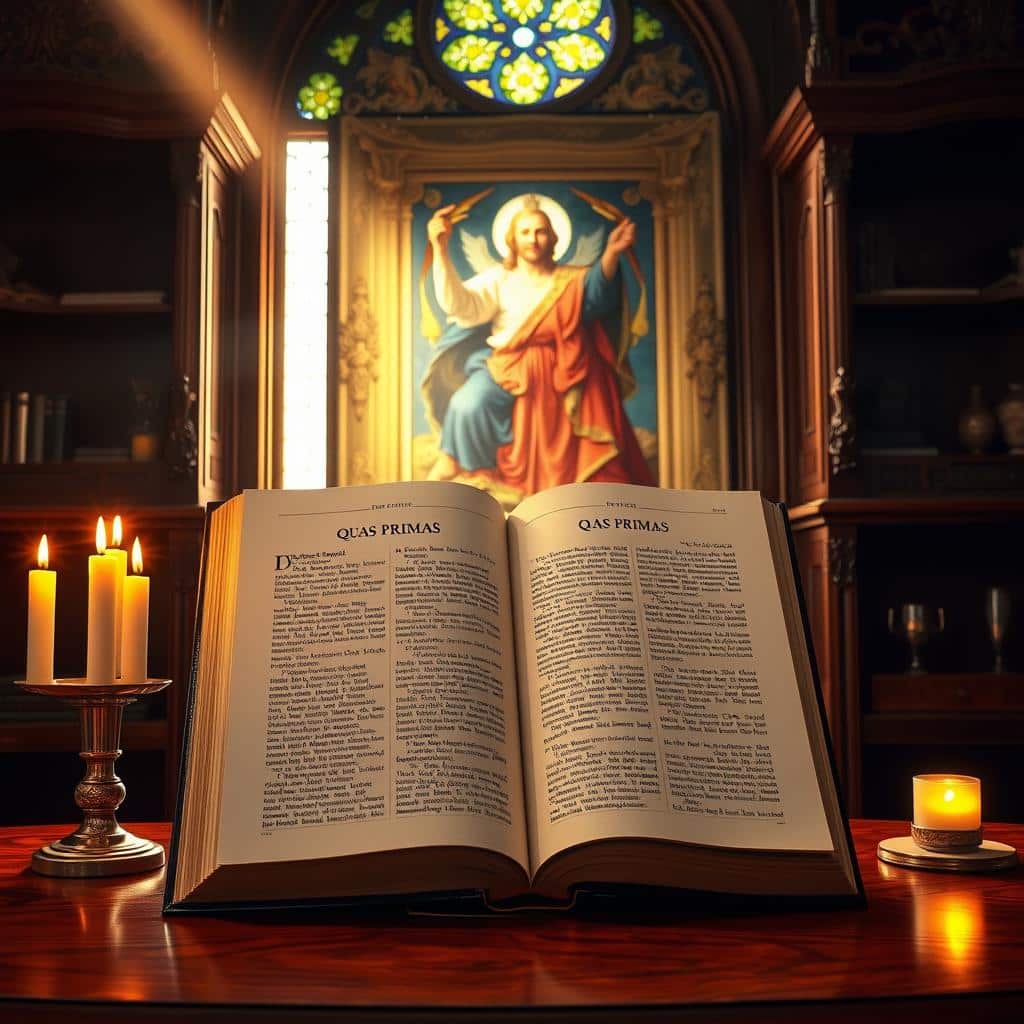
| Period | Placement | Liturgical note | Pastoral focus |
|---|---|---|---|
| 1925–1969 | Last Sunday of October | White vestments; solemn | Counter secular nationalism |
| Post-1969 | Final Sunday of the year (Ordinary Form) | Emphasis on eschatology | Witness, evangelization |
| Extraordinary Form | Last Sunday of October | Traditional calendar | Historical continuity |
When the feast is celebrated in the United States
For American dioceses, the celebration lands either on the final Sunday of ordinary time or on a late-October Sunday, depending on the form in use. This split helps parishes place liturgy, music, and catechesis with certainty each year.
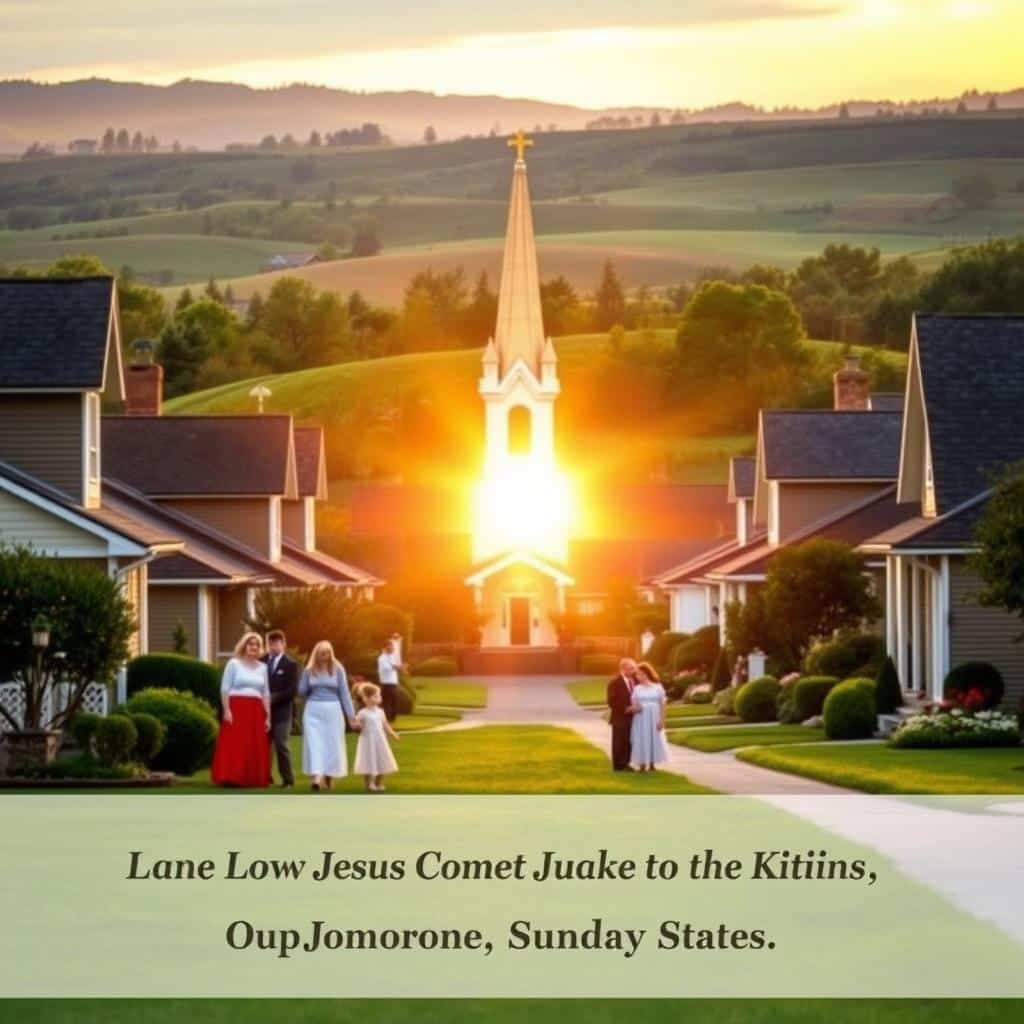
- Ordinary Form (last sunday of the liturgical year): 2024 — Nov 24; 2025 — Nov 23; 2026 — Nov 22; 2027 — Nov 21; 2028 — Nov 26; 2029 — Nov 25; 2030 — Nov 24.
- Extraordinary Form (final Sunday of October): 2024 — Oct 27; 2025 — Oct 26; 2026 — Oct 25; 2027 — Oct 31; 2028 — Oct 29; 2029 — Oct 28; 2030 — Oct 27.
Liturgical notes: The prescribed color is white, and rank is solemnity, signaling victory and dominion in communal worship.
Practical planning and pastoral notes
Diocesan World Youth Day: Since 2021, many dioceses schedule their World Youth Day on this day, which links youth mission to public witness in the world.
Publish the year’s date in bulletins and online early. Coordinate solemn vespers, Eucharistic adoration, and outdoor processions to boost parish engagement.
“Place this celebration at the right point in the calendar so formation and liturgy point toward Advent.”
Integrate the theme across homilies, music, and classroom sessions so the feast has year-round catechetical impact.
The Solemnity of Our Lord Jesus Christ, King of the Universe in the lectionary
Liturgical books assign readings that bind Israel’s story, psalmody, apostolic theology, and Gospel witness into a single message.
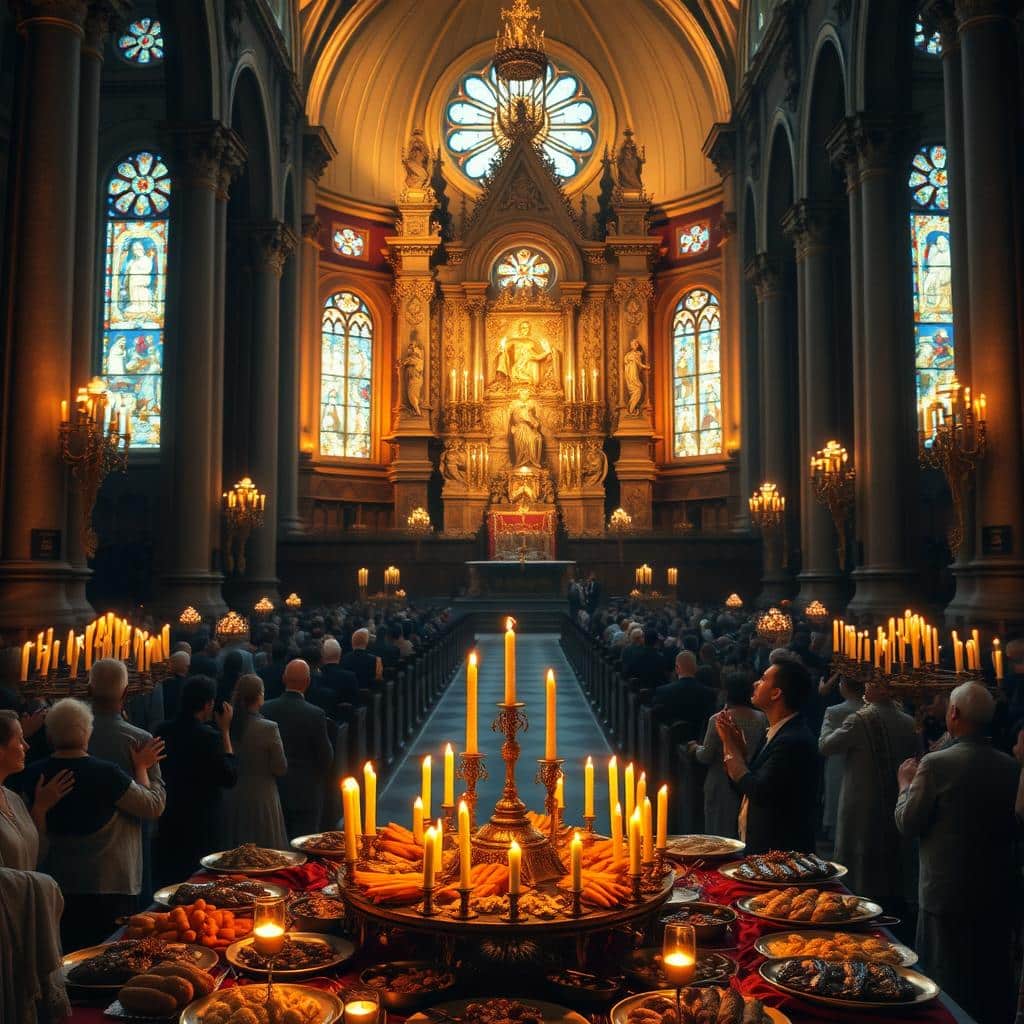
Placement in the Revised Common Lectionary and Roman Rite
Many churches in the United States mark this celebration on the Sunday before Advent through the Revised Common Lectionary. In the Roman Rite (Ordinary form) it closes the liturgical year, while the Extraordinary form keeps an October date tied to the 1960 calendar.
The appointed readings are clear and unified in their words and images:
- Reading 1: 2 Samuel 5:1–3
- Responsorial Psalm: Psalm 122:1–2, 3–4, 4–5
- Reading 2: Colossians 1:12–20
- Gospel: Luke 23:35–43
These texts work together to proclaim kingdom meaning at year’s end. They move from anointing and pilgrimage to cosmic lordship and the crucified ruler.
Catechists should draw the threads—anointing, Jerusalem, cosmic Christ, and the cross—so congregations grasp allegiance over rival loyalties. Publish the readings early and invite lectio divina during the week to deepen preparation.
Reading 1: 2 Samuel 5:1-3 — David’s anointing and the pattern of kingship
When the clans come to David at Hebron, their words and actions shape an ongoing model for rule. The tribes declare, “We are your bone and flesh,” recalling his shepherd past and God’s choice of a man after His heart.
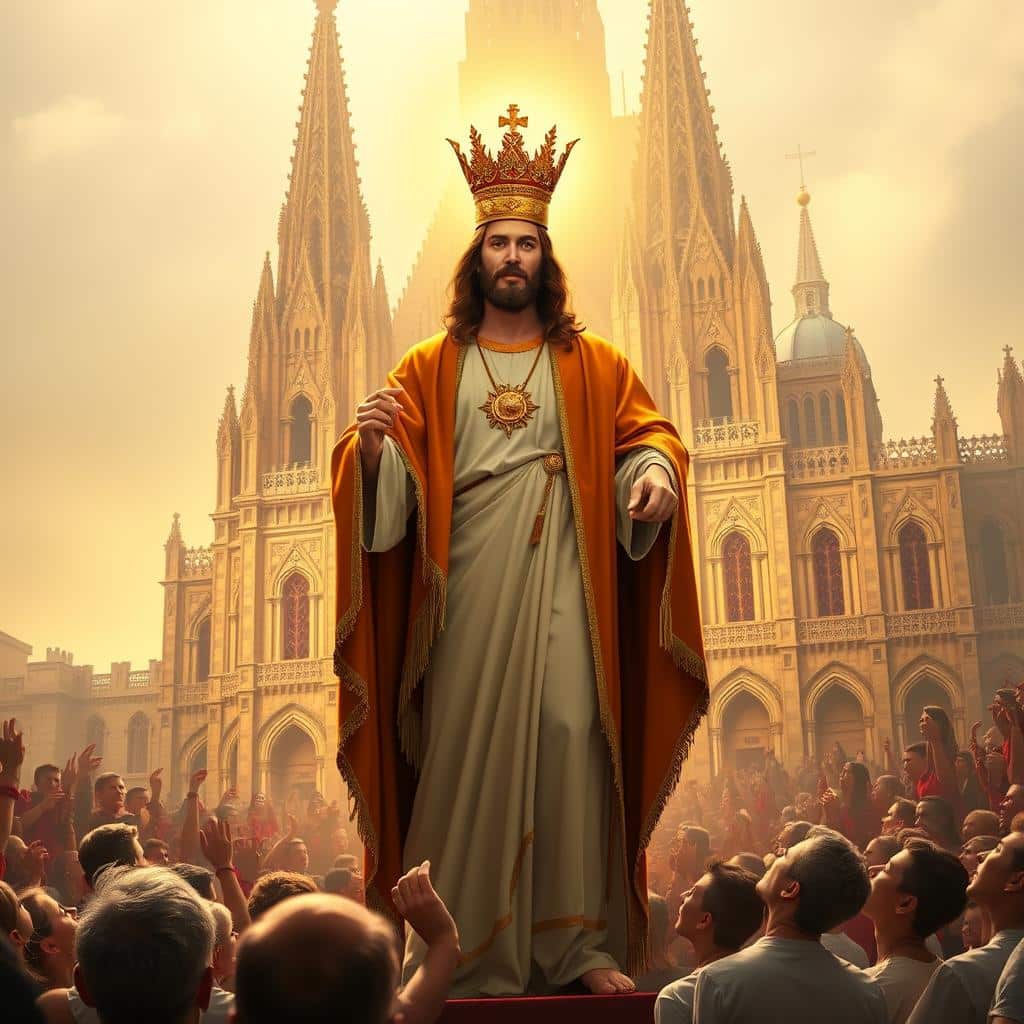
Shepherd-king imagery fulfilled in Christ
Summary: Israel anoints David in a covenant before the Lord, setting a template for godly rule.
- Community affirmation: the people unite around a trusted leader whose care echoes shepherding.
- Messianic link: this scene prefigures how jesus christ leads by service, not force.
- Practical marks: servant leadership, covenant fidelity, and defense of the flock guide faithful life.
Linking David’s anointing to the Spirit’s anointing of the Messiah invites reflection on how kingship orders personal and communal priorities. Preachers can press this reading to call leaders to know their people, act justly, and place worship and obedience above ambition.
Responsorial Psalm: Psalm 122:1-2, 3-4, 4-5 — Going up to the house of the Lord
Psalm 122 frames worship as a journey where a city becomes the meeting place of heaven and earth. On this day the psalmist’s invitation moves people from daily routine into corporate praise.
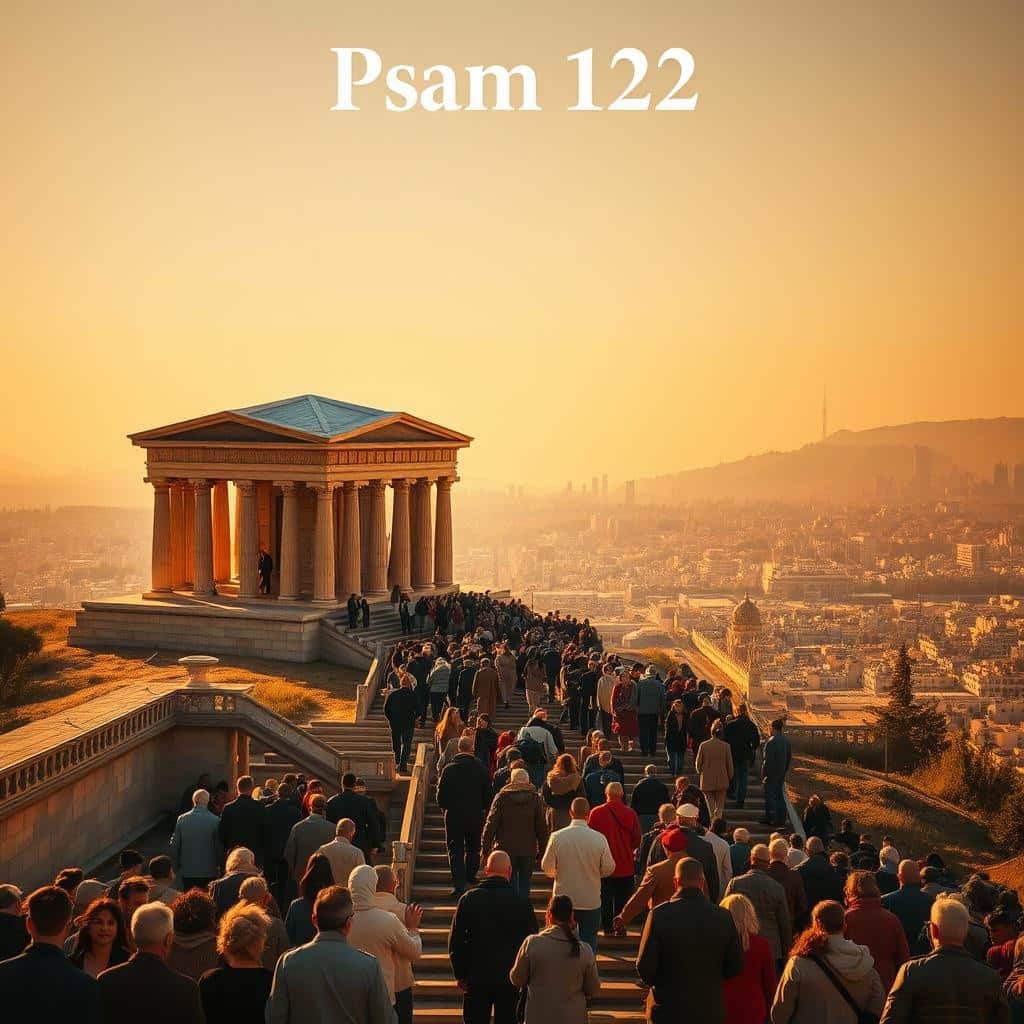
Jerusalem appears as the place where divine rule touches history. The psalm’s compact unity models ecclesial life: ordered, communal, and centered on worship.
The repeated words, “Let us go to the house,” call for communal fidelity and thankful arrival. The bookends of pilgrimage and thanksgiving mirror liturgy’s shift from gathering to communion.
- See Sunday Eucharist as an ascent that carries petitions for peace and public well-being.
- Recall the thrones for judgment as a royal motif that anticipates restorative justice.
- Invite families to pray the psalm together, aligning household life with parish worship and service.
Read in this way, Psalm 122 invites a people whose life and mission show God’s reconciling reign on earth.
Reading 2: Colossians 1:12-20 — Christ’s cosmic kingship
Paul’s hymn in Colossians lifts sight from ordinary life to a cosmic vision that orders creation and salvation.

“Firstborn of all creation”: Creator, Redeemer, Head
Summary: Paul names one who is both Creator and Redeemer. He writes that the Father delivered us from darkness and transferred us into a reigning realm.
Key titles—image of the invisible God, firstborn of creation, Head of the Body—clarify that lord jesus christ stands at the center of reality and church life.
From darkness to the kingdom of the beloved Son
That movement defines Christian identity. Believers receive new life, a calling to witness to the kingdom among all nations.
“In him all things hold together.”
- Paul grounds rule in reconciling love and divine power.
- The hymn affirms Christ’s full divine nature and human presence, revealing shared glory.
- Catechetical focus: Christ’s primacy, church dependence, call to mature hope.
| Line | Theme | Practical focus |
|---|---|---|
| Deliverance | From darkness to light | Conversion and baptismal identity |
| Creation | All things made through him | Care for creation and mission |
| Reconciliation | Cross unites and restores | Peacemaking and evangelism |
Gospel: Luke 23:35-43 — The crucified King and the promise of paradise
A brief exchange at Golgotha reveals how mercy crowns suffering with true rule.

Luke shows soldiers and passersby taunting a condemned man as “king.” That mockery meets a tender reply to a repentant thief. Even in execution, royal mercy appears.
Key moments:
- Cross as throne: here the lord jesus rules by service, not force.
- Irony of titles: taunts expose worldly power while true sovereignty shines through suffering and love.
- Two thieves: one rejects, one trusts—at the end the kingdom opens to faith and repentance.
Jesus answers,
“Amen, I say to you, today you will be with me in Paradise.”
That promise makes salvation immediate at death and shows mercy active now.
Pastoral application: Encourage confession, reconciliation, and mercy in parish life. Train disciples to bear witness across a troubled world by following a king who gives himself away.
How various Christian traditions observe Christ the King
Across denominations, congregations mark this feast with public worship, banners, and music that declare a reign rooted in mercy.

Catholic practice
Liturgies are solemn. Many parishes offer Eucharistic adoration for a full day and organize processions that bring worship into public spaces.
Some dioceses note indulgences tied to public recitation of the Act of Dedication to Christ the King.
Lutheran, Anglican, Methodist, Reformed, and Moravian observances
Lutheran and Anglican rites stress sovereignty and Christ’s return. The ELCA often calls it Reign of Christ Sunday.
Methodists place the day within Kingdomtide, emphasizing mission to the nations and care for the world. Moravian worship uses white vestments to signal joy and victory.
Ecumenical notes and calendar forms
Hymnody in Reformed and other churches—songs like “Crown Him with Many Crowns”—teaches rule over rulers and powers.
Ordinary and Extraordinary form distinctions matter, as does Western Rite Orthodox placement; yet shared devotion shows unity across the world.
“Shared prayer and local service make this feast a visible witness to the reign that calls all nations.”
Key themes: kingship, kingdom, and the end of time
This feast points forward to a final act when every tongue and nation will acknowledge royal rule and restored justice.
Eschatological hope and the return in glory
End time expectation shapes worship today. Scripture teaches that Christ will return in glory to consummate judgment with justice and mercy.
This future event brings urgency to preaching and calls for both consolation and conversion.
Christ’s reign: supreme, universal, eternal, spiritual
Four qualities define the reign: supreme, universal, eternal, and spiritual. These traits show how the kingdom transcends political power and lasts beyond history.
Titles—Creator, Redeemer, Head of the Church—root discipleship in saving work. Our life finds purpose within that plan.
- Practical aim: Hope for heaven motivates service in the world, not flight from it.
- Renewal: the feast urges vigilance and fidelity as the church closes the liturgical year.
- Suggested practices: Eucharistic adoration, Scripture reading, and works of mercy cultivate steady witness to the kingdom.
“Worship now anticipates the day when all creation bows in true allegiance.”
Living the feast today: worship, witness, and works of mercy
Parishes can turn this day into a visible public witness by centering liturgy on Eucharistic procession and communal dedication.
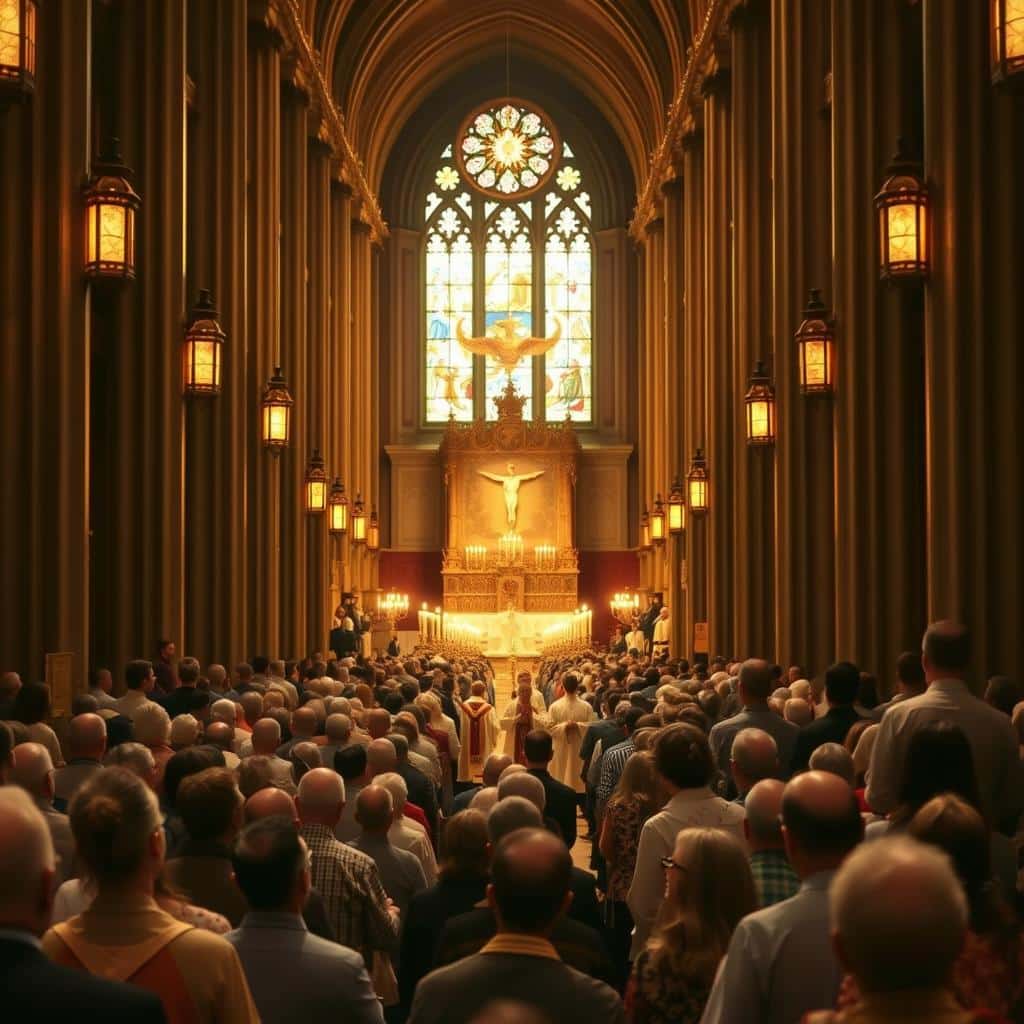
Public dedication and parish practice: Encourage the public recitation of the Act of Dedication on the day so people learn why this prayer shapes life and mission. A plenary indulgence is granted to those who recite it publicly; explain that clearly in bulletins and announcements.
Worship and witness work best paired. Promote Eucharistic adoration and processions to bring presence into the world. Link Colossians 1:12–20 to vocation, stewardship, and daily witness in workplaces and neighborhoods.
Charity as allegiance
Make service the measure of loyalty. Serving the least is serving the King; that way charity becomes a public claim of faith.
- Ask families to attend Mass, pray Psalm 122, read Luke 23:35–43, and pick a household work of mercy.
- Plan one parish-wide service project that blesses the community and shows compassion in real things people need.
- Offer catechesis that explains how public faith counters secularism through love, truth, and sacramental life.
| Action | Liturgical link | Practical result |
|---|---|---|
| Act of Dedication (public) | Procession, Benediction | Public witness; eligible indulgence |
| Eucharistic adoration | Mass and vespers | Visible presence in streets and parishes |
| Parish service project | Colossians theme | Helps neighbors; shows reign by love |
“Invite testimonies of changed lives as evidence that faith shapes community.”
Conclusion
, Believers close one cycle while opening another by naming a reigning center for life and mission.
Remember that pope pius rooted this feast in quas primas, and the encyclical quas primas called nations to recognize a saving rule. Our readings—2 Samuel 5:1–3; Psalm 122:1–2, 3–4, 4–5; Colossians 1:12–20; Luke 23:35–43—shape a clear arc from anointing to cross and promise.
Live this feast with public worship, credible charity, and honest conversion. Let last sunday placement of the liturgical year move you from ending to beginning with hope. Trust that jesus christ, as king universe, will bring every life to completion in glory.
